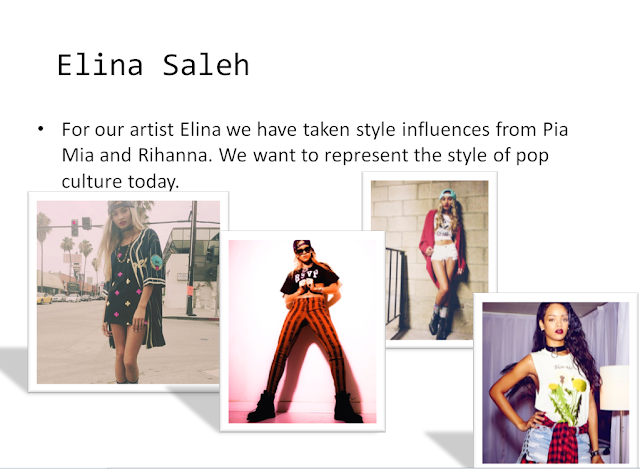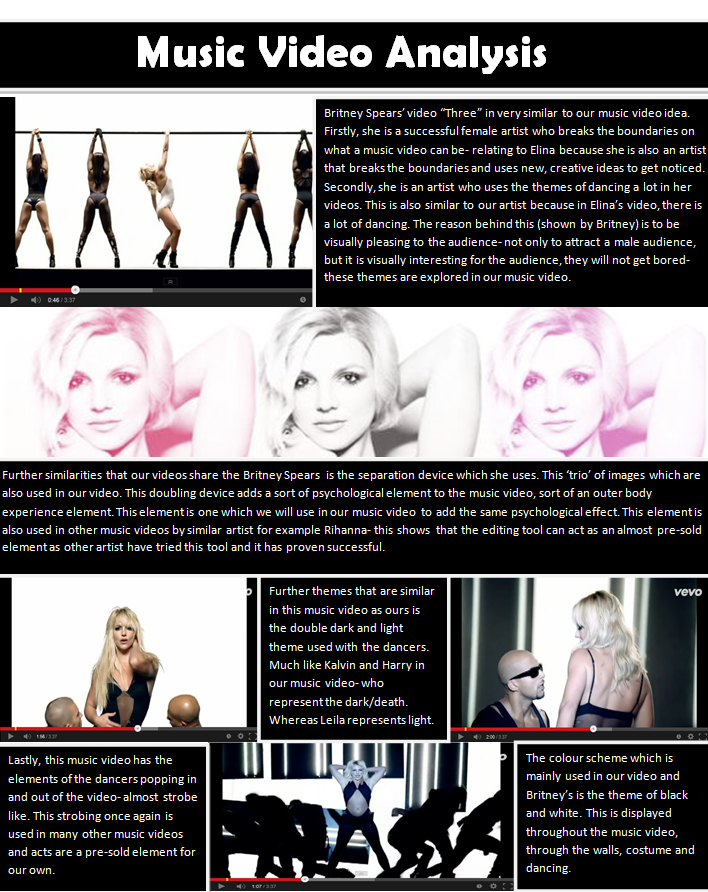 We have now completed the editing process. Overall this process was stressful as at times it was difficult to imagine what the video would eventually look like, but it was also enjoyable as it was exciting to see all our hard work come together.
We have now completed the editing process. Overall this process was stressful as at times it was difficult to imagine what the video would eventually look like, but it was also enjoyable as it was exciting to see all our hard work come together.We were pleased with the rough cut but the next stage of editing was all about percicsion. So we went through our timeline frame by frame to make sure that the cuts were in the beat to the music. We would put a marker (the marker creates a snap-point on the timeline or on a clip that the playhead will lock onto) exactly where each beat is and then we would line up the clips to the marker so that the clips would cut on beat. This was a slow process as it required a lot of attention to detail, but most of the time we were only a few frames out so no serious changes were made. Once this was done the whole thing looked far sharper.
We then watched through the video a few times to ensure that all the footage we used was the best quality. It was bought to our attention that there were a few clips which were out of focus, and although these were not really noticable, we still wanted to change them so that our video would be the best it could be. So we located the faulty clips, delted them and then replaced them with better quality footage, but we had to ensure that the clips we added fitted in with the music and the other footage before and after it. Once this was done we were finished with the offline work and it was time to move onto the online work to do tidy the whole thing up.
The online work consists of the nitty-gritty editing where we get rid of an sections of a clip which are not good. We initally worked on the opening and ending footage of the paint on Elina. We started by getting rid of the cup which was accidentily in the clip for a few seconds, we had to highlight this area and then remove it and replace it with something else. We then adjusted the settings of the clip in order to make the gold paint more prominant, as orgionally it was a bit dull and not very noticable. So as this is a key element of our video we wanted to highlight it so that it was clear. Lastly, we worked on improving the texture of the floor so that it portrayed a road more convincingly, so we worked on developing a concrete/gravil texture and then we replaced it for the orgional studio floor thus giving the illusion Elina is lying on a road.
After all this post production our video was completed and we were really proud of it as we thought it looked really interesting and professional. We have had some really positive comments from people who have been watching us create it and we are really excited to show it to our target audience and see what they think.



























